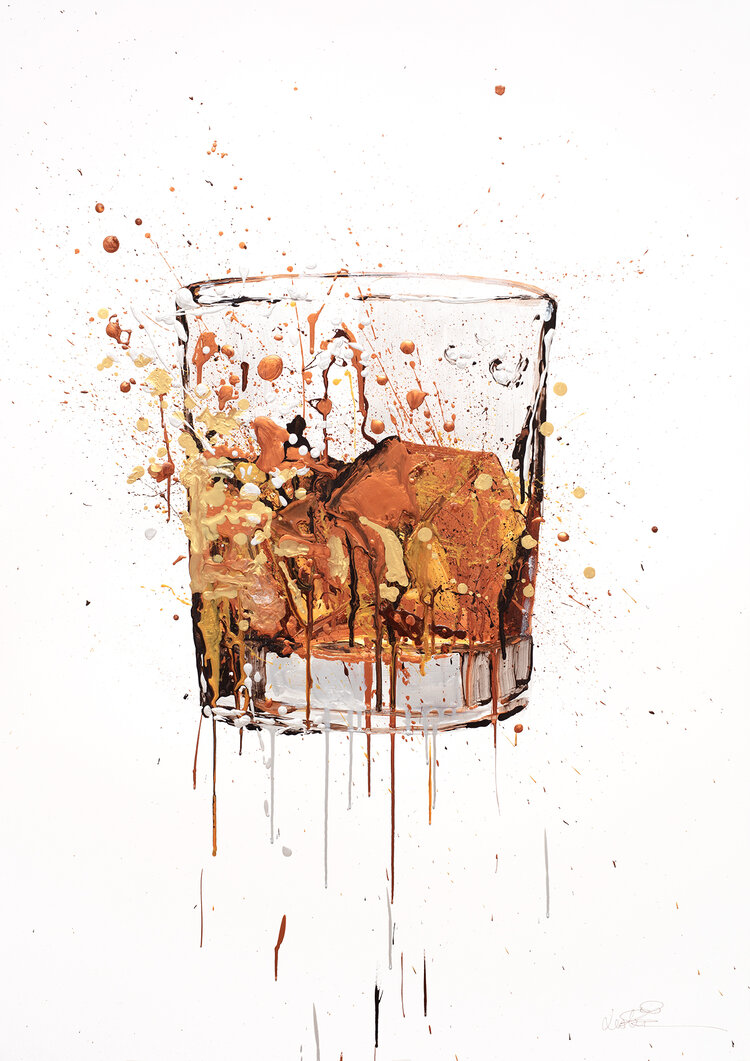Bourbon Art in Contemporary Society: Where Custom Satisfies Technology
Wiki Article
The Relevance of Whiskey Art in Celebrating Heritage and Workmanship in the Beverage Industry
The elaborate relationship in between bourbon art and the event of heritage and workmanship within the beverage sector can not be overemphasized. With thoughtfully created labels and bottles, bourbon brands envelop their historical origins and the artisanal abilities that define their manufacturing techniques.The Historical Origins of Whiskey
At the heart of bourbon's attraction lies a rich tapestry of historical roots that map back to old civilizations. The beginnings of bourbon can be connected to the distillation methods of the Sumerians and Babylonians around 2000 BCE, where very early kinds of fermented grain beverages started to arise. It was in the Center Ages that the art of distillation developed significantly, specifically in Ireland and Scotland, leading to the development of bourbon as we understand it today.
The term "bourbon" itself stems from the Gaelic word "uisce beatha," suggesting "water of life." This expression highlights the social relevance of bourbon in Celtic societies, where it was frequently associated with rituals, events, and public bonding. By the 15th century, distillation came to be a recognized craft within reclusive communities, leading the means for the establishment of legal distilleries.
As profession courses increased, whiskey's appeal grew, transcending local borders and recording the passion of lovers worldwide. Realism Art. This historical journey mirrors not just the craftsmanship behind whiskey manufacturing yet additionally its indispensable role in social and cultural contexts, marking it as a substantial beverage throughout history
Artistic Expression in Branding
Scotch branding stands as a compelling junction of artistry and commerce, where aesthetic identity plays a crucial function in shaping customer assumption. The aesthetic appeals of whiskey tags, packaging, and marketing materials reflect not just the brand's story but likewise its core worths and heritage. Through creative expression, distilleries share a narrative that reverberates with consumers, evoking emotions and stimulating connections.Using color, typography, and imagery in branding offers to differentiate items in a saturated market. Standard themes may evoke a sense of credibility and craftsmanship, while modern-day layouts can indicate development and forward-thinking. This critical creative instructions boosts brand name recognition and loyalty, permitting customers to build a personal connection with the whiskey they choose.
Additionally, creative expression in branding typically functions as a celebration of local heritage. Distilleries often include neighborhood icons or historic recommendations right into their layouts, producing a local color that invites consumers to partake in a wider social experience. Eventually, the artistry behind whiskey branding not only improves aesthetic charm however also enriches the general narrative of the brand name, cultivating a much deeper admiration for the workmanship and heritage ingrained in each container.
Workmanship in Container Layout
The artistry noticeable in bourbon branding expands past visual identity to include the workmanship associated with container style. Each container functions as a vessel not just for the spirit within, but likewise for the tale it tells concerning its practice, origin, and quality. The style procedure needs careful attention to information, as elements such as closure, material, and form contribute significantly to the total assumption of the scotch.Craftsmanship in container design includes picking top notch glass that can boost the bourbon's color and clarity, while likewise supplying a tactile experience for the consumer. The silhouette of the bottle must be both practical and aesthetically enticing, often reflecting the heritage of the brand. Several distilleries select distinct forms or embossed logo designs that evoke a feeling of authenticity and history.
Furthermore, the tag layout and typography play a crucial function in interacting the brand name's narrative. Limited Edition. A well-crafted bottle not just astounds the consumer's eye however additionally enhances the brand's dedication to high quality and practice. This way, the workmanship of container design ends up being a vital facet of the bourbon experience, merging virtuosity with a profound respect for heritage
Social Relevance of Scotch Art
Celebrating tradition and craftsmanship, the cultural relevance of whiskey art transcends simple aesthetics, linking with the social and historical narratives of the regions from which it originates. Each container works as a canvas, depicting the special stories, folklore, and traditions that have actually shaped local whiskey-making practices. The detailed layouts usually reflect the heritage of the distillers, incorporating signs and themes that reverberate with the culture and worths of their areas.
Furthermore, scotch art plays an important function in communal gatherings and parties, acting as a substantial web link in between people and their shared experiences. By valuing the virtuosity in bourbon packaging, consumers cultivate a deeper understanding and respect for the craft, eventually improving their enjoyment of the drink itself.
Modern Trends in Bourbon Presentation
Over the last few years, the presentation of whiskey has advanced to mirror contemporary preferences and fads while still recognizing standard craftsmanship - Whiskey Art. Distilleries are significantly concentrating on visual aspects that improve the overall alcohol consumption experience, bridging the space between heritage and modernityIngenious container designs have actually arised, commonly incorporating lasting materials and imaginative tags that tell engaging stories. Many brand names now collaborate with neighborhood musicians, infusing their products with distinct aesthetic expressions that reverberate with Realism Art customers. Additionally, limited-edition releases are frequently packaged in collectible containers, adding worth and appeal for aficionados.

Verdict
In final thought, bourbon art offers as a vital conduit for expressing the heritage and workmanship integral in the beverage industry. Via complex branding, ingenious container designs, and culturally considerable imaginative aspects, bourbon brand names properly honor their customs and connect with customers.

Craftsmanship in bottle layout entails picking premium glass that can enhance the bourbon's shade and clarity, while also offering a responsive experience for the consumer. In this method, the craftsmanship of bottle layout ends up being a vital aspect of the whiskey experience, merging artistry with an extensive respect for heritage.
In final thought, whiskey art serves as an important channel for revealing the heritage and craftsmanship intrinsic in the beverage industry.
Report this wiki page